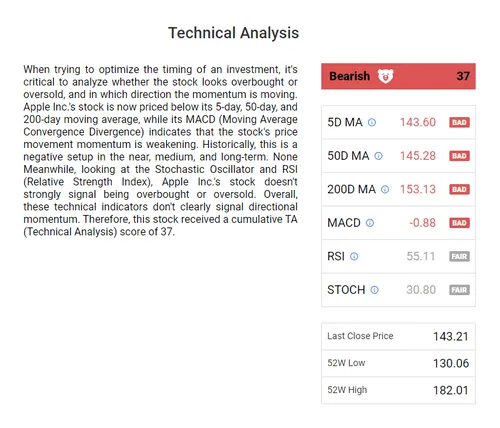Top 10 Tips For Evaluating Customer Support On Ai Stock Trading Platforms
Support for customers is essential when selecting an AI stock-predicting/analyzing trading platforms. Support that is reliable and prompt can be a major factor in resolving issues, maximizing utilization of the platform and ensuring an enjoyable trading experience. Here are 10 top ways to evaluate the level of customer service offered by these platforms.
1. Assess the Availability of Support
24/7 Support: Check whether the platform offers round-the-clock support. It's crucial, especially for trading on global markets.
Business hours If you don't have 24/7 support, be sure support is available to you during your business hours.
Holiday coverage: Check to see if you are able to receive assistance on weekends, holidays and closings of markets.
2. Test Response Times
Initial response. Contact customer support and ask them a sample question to see how fast they can respond.
Time to resolve The problem: Don't just acknowledge the problem and then decide the time it will take to resolve it.
Live chats: If it is available test the responsiveness and effectiveness.
3. Assess Support Channels
Multiple channels: Make sure the platform provides support via a variety of channels (e.g. email, phone, live chat, social media).
Make sure that the support channel is solid.
Self-service Solutions: To resolve problems quickly, use a comprehensive Knowledge Base as well as FAQs and Community Forums.
4. Evaluation of Support Quality
Knowledge: Make sure that support agents have a complete knowledge of the platform trading, technical and other issues.
Problem-solving: Assess whether agents of support can efficiently resolve difficult issues or escalate them as needed.
Professionalism. Make sure that all interactions with support were friendly, professional and helpful.
5. Look for Account Managers who are Dedicated
Premium support: Make sure that premium plans or institutional users have access to account managers.
Account managers who offer proactive and tailored assistance.
Building relationships - Make sure that account managers are reached and develop long-term relations with users.
Examine the Documentation Support
Knowledge base: Make sure the platform has a searchable and well-organized knowledge base, which includes tutorials, guides, and troubleshooting tips.
Take a look at the video tutorials on the platform and webinars to determine whether they're available to visually impaired learners.
API documentation. API documents are important for developers.
7. Assess the Community Peer and Support
User forums: See if the platform has an active community of users or forum in which users can share tips and solutions.
Look for social media groups that aren't official (e.g. Reddit or Facebook). These groups allow users to discuss the platform.
Community engagement: Verify that the platform team is actively participating in the forums and discussions of the community.
8. Evaluate Escalation Processes
Issue escalation: Be sure to have clearly defined procedures for escalating issues that are not resolved to management or support at a higher level.
Follow-up. Verify whether support is in contact after the issue has been resolved.
Feedback loops: Test the capability of the platform to gather user feedback to improve the support service.
9. Test Support in Critical Conditions
Market volatility: Contact support during high-volatility periods to assess their responsiveness under stress.
Technical issues: You are able to simulate a technical problem (e.g. login issues, data divergences) to view the support team's response.
Trade execution: Determine if support can assist with urgent trade-related issues (e.g. unsuccessful orders, execution delays).
Review of User Feedback from Reviews
Online reviews: Use platforms like copyright G2 or Reddit to read user reviews and determine the overall satisfaction.
Testimonials or Case Studies: Search for testimonials or studies highlighting positive customer experiences.
Find out how the platform deals with complaints and negative feedback.
Bonus Tips
Support during trial period: You can test the functionality of the platform using the demo or free trial period.
Language support: Find out whether you can receive support in your native language if you don't know English.
Training and onboarding: See whether the platform has onboarding sessions or training to aid new users to get up and running.
These guidelines will help you assess the support provided by AI platform for analyzing and predicting stocks. This way you can pick a reliable platform friendly, helpful and responsive support. A strong customer service will improve your experience and are able to make the most of all options. Check out the most popular free ai tool for stock market india recommendations for website tips including best stock analysis website, investment ai, ai trading, ai trading software, ai stock picker, ai stock prediction, ai for trading, ai for investing, ai for investing, ai stock picks and more.

Top 10 Tips For Assessing The Risk Management Aspect Of Ai-Based Stock Trading Platforms
Risk management plays a vital function in any AI-based platform for trading stocks. It safeguards your investment by limiting the risk of losses and helps you to maximize profits. Platforms with robust risk-management tools can assist you in navigating turbulent markets and make educated choices. Here are the top 10 tips for assessing these platforms' risk management capabilities:
1. Examining Stop-Loss or Take Profit Features
A level that is customizable: You must be able to modify the stop-loss/take-profit levels of the individual strategies and trades.
Check to see if your trading platform supports trailing stop which automatically adjusts in the event that the market moves toward you.
Guaranteed stops: Check whether the platform provides guarantees on stop-loss orders that guarantee that your position will be closed at the price you specified, even in volatile markets.
2. Calculate Position Size Tools
Fixed amount - Make sure that you know the amount of your positions in relation to a set amount.
Percentage of portfolio: Check whether you can establish size limits as a percentage of your total portfolio to control risk in a proportional manner.
Risk-reward-ratio: Determine if the platform permits users to define their own risk/reward ratios.
3. Make sure you have Diversification Support
Multi-asset trade: Make sure that the platform allows trading across multiple asset classes (e.g. ETFs, stocks, forex) to help diversify your portfolio.
Sector allocation: Determine whether your platform offers tools for managing and monitoring the exposure to sectors.
Geographic diversification: Make sure that the platform allows trading in international markets to spread the geographic risk.
4. Examine the impact of leverage and margins
Margin requirements - Ensure that the platform clarifies margin requirements clearly.
Find out if you can set leverage limits to limit risk exposure.
Margin calls - Examine to see if your service notifies you of margin calls promptly. This can help avoid liquidation.
5. Assessment and reporting of risk
Risk metrics: Ensure that the platform offers key risk indicators (e.g., Value at Risk (VaR), Sharpe ratio drawdown) to your portfolio.
Evaluation of scenarios: Ensure that the platform you're using lets you simulate market scenarios and assess the risk.
Performance reports: Ensure the platform provides you with detailed information on the performance of your investments, including returns that are adjusted for risk.
6. Check for Real-Time Risk Monitoring
Monitoring your portfolio. Be sure your platform can track the risk in real-time of your portfolio.
Alerts: Make sure you can receive real-time notifications regarding events that are risk related (e.g. stop-loss triggers or breach of margins).
Make sure you have dashboards that can be customized to give you an overview of your risk profile.
7. Evaluation of Backtesting and Stress Testing
Stress testing - Make sure your platform allows you stress test your portfolios and strategies in extreme market situations.
Backtesting: Check if the platform supports backtesting strategies based on historical data to assess risk and performance.
Monte Carlo: Verify the platform's use of Monte-Carlo-based simulations for assessing risk and modeling a range or possible outcomes.
8. Assess Compliance with Risk Management Regulations
Regulation compliance: Ensure that the platform is compliant with applicable rules for risk management (e.g., MiFID II in Europe, Reg T in the U.S.).
Best execution: Check if the platform adheres the best execution practice, which ensures trades are carried out at the lowest cost so as to limit any loss.
Transparency: Find out whether the platform offers clear and transparent disclosures about risks.
9. Examine for Risks that are User Controlled Parameters
Custom risk management rules: Ensure the platform you choose lets you create your own customized risk management rules.
Automated controls for risk You should check if your platform can implement risk management policies on the parameters you've defined.
Manual overrides: Ensure that your platform allows manual overrides in emergency situations.
Review Case Studies and User Feedback
User reviews: Read user feedback to determine the effectiveness of the platform's managing risk.
Case studies: Look for cases studies or testimonials that highlight the platform's risk management capabilities.
Community forums - Search to see if the website provides a user-friendly community which is active and where traders are able to share their strategies for managing risk.
Bonus Tips:
Trial period: Try a free trial or demo to try out the features of the platform for risk management in real-world scenarios.
Support for customers: Ensure that your platform has a robust assistance for any questions or concerns related to risk management.
Educational resources: See whether there are any educational resources that cover the best practices for managing risk.
These tips will help you evaluate the risk management capabilities of AI software for analyzing and predicting stocks. This way, you'll be able to pick a platform that safeguards your capital and minimizes potential losses. It is vital to have robust risk-management tools in order to successfully navigate the volatile markets. Check out the top discover more here about ai stock trading app for website recommendations including stock ai, using ai to trade stocks, ai invest, chatgpt copyright, best ai trading app, ai trading bot, copyright advisor, ai based trading platform, stocks ai, best ai stock and more.

Comments on “20 Recommended Pieces Of Advice For Choosing copyright Ai Trading Bot Websites”